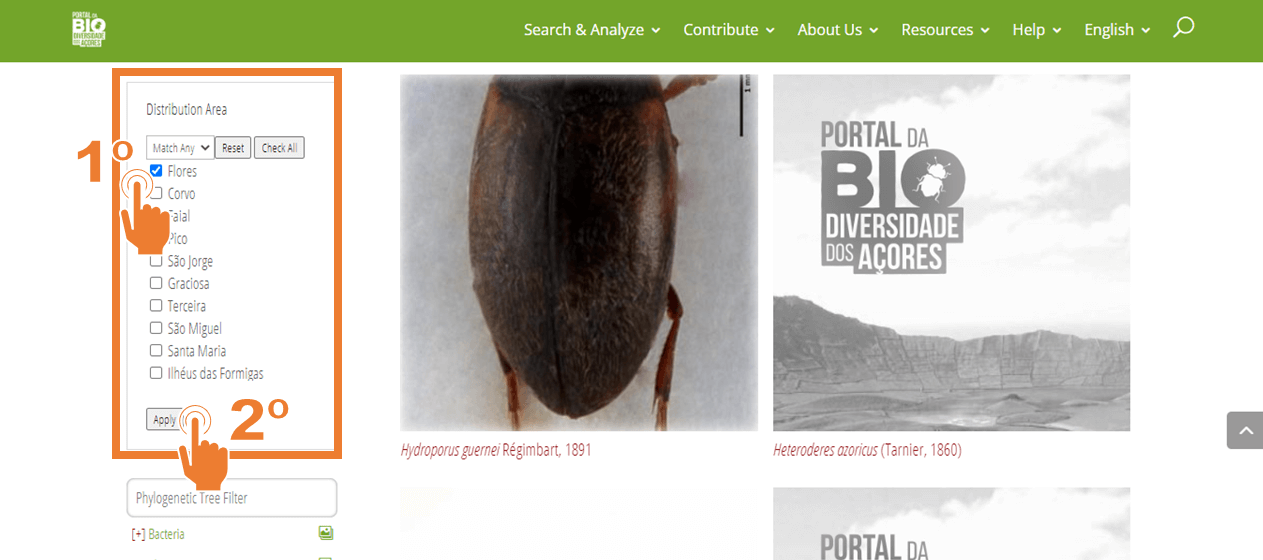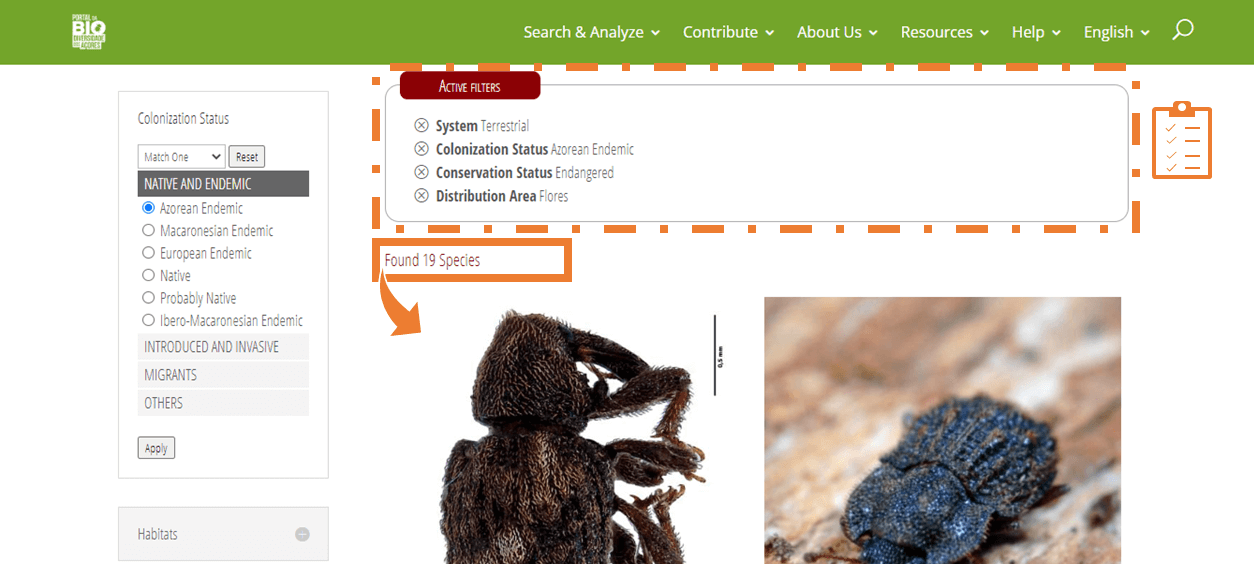Where can I find species list in ABP?
Last update at 2022/08/16
In ABP you can create your own species lists. Select Search Species in the top menu Search & Analyse. In the left side menu, you can choose the criteria to create your own species list. Let say you want to create a list of all endemic terrestrial species of the Azores that were classified as in danger by IUCN.
First click on plus sign next to System to open the menu and then select which ecosystem you want to search for species. In this example, de-select Marine, as we want to look for terrestrial species (note: in this APB filter, terrestrial also includes freshwater systems). The page will refresh to include your selection, as shown in Active Filter box.
Next, click on plus sign in the Colonisation Status menu just below the System menu. Most filters allow you to search for more than one type by selecting Match Multiple in the dropdown box, as Match One is selected by default. In our example, it is only necessary to select Azorean Endemic, under the dropdown submenu Native & Endemic, as we just want to find species unique to the Azores. Then click on Apply button to include your choice in Active Filters and to refresh the page.
To find species from the Azores classified by IUCN, click on the plus sign in the Conservation Status menu, and then click on IUCN – Red List. Select Endangered from dropdown submenu and then click on Apply button.
You have created a list of terrestrial endemic species of the Azores classified by IUCN as in endangered. Imagine now that you want to narrow your list to those species that occur in Flores Island. Go to the Distribution Area menu and select Flores and then click on Apply button.
In top of the page, you can see how many species are included in your newly created list. If you want to remove any of the search criteria, just click on X before the name of the filter’s name in the active filter box.
Please bear in mind that this ABP tool was also design for users to search for taxa. If taxa lower than species (eg, subspecies, varieties, forma) are present in your selection, both species and children taxa will be listed.






